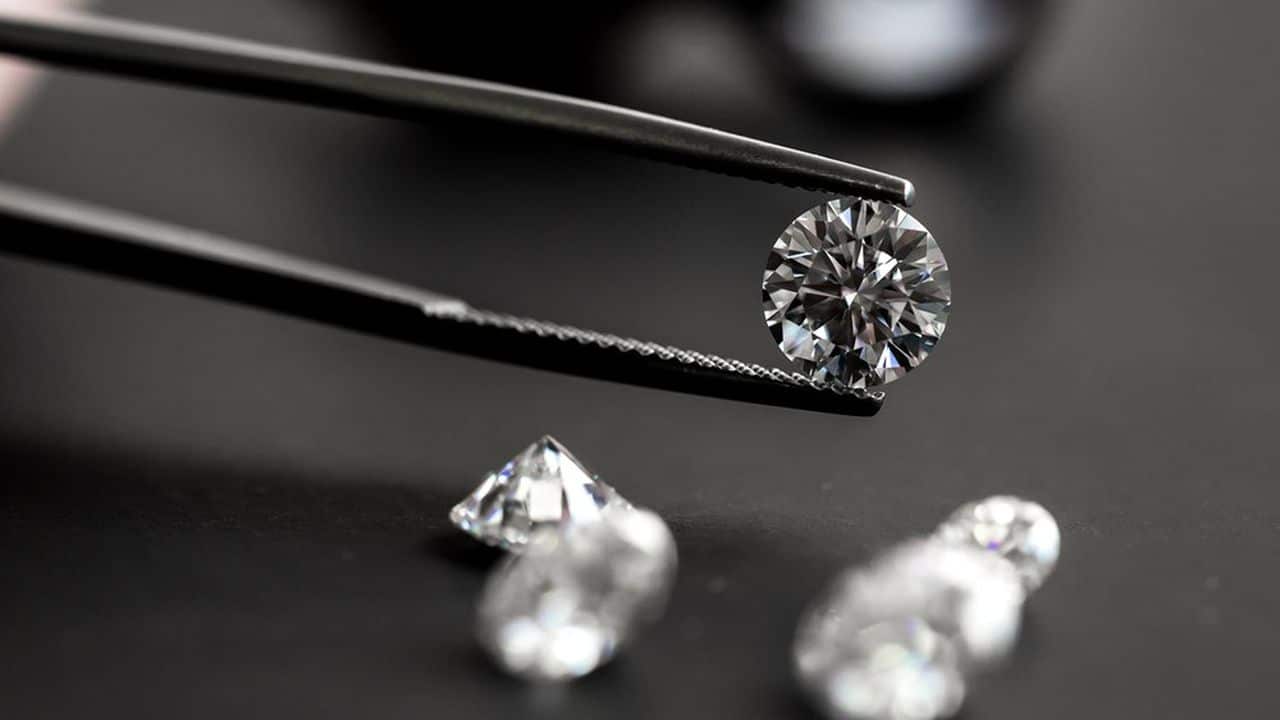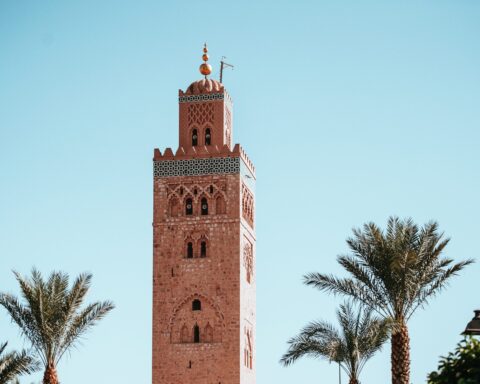[vc_row njt-role=”people-in-the-roles” njt-role-user-roles=”administrator,editor,author,armember”][vc_column][vc_column_text]
South African diamond conglomerate De Beers published its half-year results at the end of July. They show a fall in profits, but production and total sales volume remained stable compared with the previous year. However, the focus is on synthetic diamonds, in competition with natural diamonds, whose prices are not softening.
After a slow start to the year, De Beers‘ half-year report for 2023 shows that total rough diamond sales volume, at 15.3 million carats, remains in line with the previous year.
Nevertheless, revenues were down 21% to $2.8 billion. This decline follows several months of moderate customer demand, low average selling prices and rising expenses.
First-half production data illustrate a robust performance in three of De Beers’ operating countries, namely Botswana, Namibia and Canada. However, this performance was offset by reductions in South Africa due to the transition of the Venetia open-pit mine.
South Africa in the doldrums
In South Africa, production has been cut by 59%, from 9 million carats in 2022 to 1.2 million carats. This reduction is due to the closure of the country’s only mine, the Venetia open-pit mine, which closed at the end of 2022. During this transition to underground operations, workers continue to process low-grade surface reserves. Recently, De Beers announced that it had achieved its first production during this transition to underground. The company plans to gradually increase production over the coming years.
In 2013, De Beers began the process of converting the Venetia mine to underground operation. This $2 billion project aims to extend the mine’s operating life to 2046, with anticipated production of around 94 million carats. As a result of this project, Venetia, and other initiatives to extend the mine life cycle, capital expenditure increased by $302 million, in line with the half-year report.
Botswana, Namibia and Canada at ease
Diamond production in Botswana, which accounts for more than 75% of De Beers’ total production, totaled 12.7 million carats, recording growth of 9% over 2022. This increase is due to the implementation of a targeted processing plan for higher-grade ore at the Orapa mine, as indicated by De Beers.
In Namibia, production rose by 21% to 1.2 million carats. This increase is attributed to continued production from the Benguela Gem marine mining vessel, in operation since March 2022. Continued expansion of the mining area in land-based operations also contributed to the increase, according to the company.
Production in Canada rose by 9% to 1.4 million carats, as the processing of higher-grade ore offset the period of scheduled plant maintenance, according to De Beers.
Production projections for the current year remain between 30 and 33 million carats, down from 34 million carats in 2022.
Expensive synthetic diamonds
The average price of diamonds fell by 23%, from $213 per carat in 2022 to $163 per carat in 2023, mainly due to the increased sale of lower-value diamonds this year. However, competition between synthetic and natural diamonds is the main contributor to this trend.
Sarah Kuijlaars, CFO of De Beers, pointed out that retail prices for synthetic laboratory diamonds are falling at a slower rate than wholesale prices, and often remain high. These remarks come on the heels of an initiative by Lightbox, De Beers’ synthetic diamond brand, which launched a trial of engagement rings with the aim of providing affordable options. Revenues generated by segments other than rough diamonds grew by around 12% year-on-year, totaling around $330 million in the first six months of 2023. This includes Lightbox, the Element Six industrial diamond business and De Beers Jewellers.
Demand for rough diamonds was influenced by persistent unfavorable macroeconomic factors and high levels of polished diamond stocks in mid-2023. The average rough diamond price index also fell by 2%. Rough diamond production remained relatively stable at 16.5 million carats, compared with 16.9 million carats in the first half of the previous year.
Read also >Setting the record straight on diamonds
Featured photo : ©Shutterstock[/vc_column_text][/vc_column][/vc_row][vc_row njt-role=”not-logged-in”][vc_column][vc_column_text]
South African diamond conglomerate De Beers published its half-year results at the end of July. They show a fall in profits, but production and total sales volume remained stable compared with the previous year. However, the focus is on synthetic diamonds, in competition with natural diamonds, whose prices are not softening.
After a slow start to the year, De Beers‘ half-year report for 2023 shows that total rough diamond sales volume, at 15.3 million carats, remains in line with the previous year.
Nevertheless, revenues were down 21% to $2.8 billion. This decline follows several months of moderate customer demand, low average selling prices and rising expenses.
First-half production data illustrate a robust performance in three of De Beers’ operating countries, namely Botswana, Namibia and Canada. However, this performance was offset by reductions in South Africa due to the transition of the Venetia open-pit mine.
South Africa in the doldrums
In South Africa, production has been cut by 59%, from 9 million carats in 2022 to 1.2 million carats. This reduction is due to the closure of the country’s only mine, the Venetia open-pit mine, which closed at the end of 2022. During this transition to underground operations, workers continue to process low-grade surface reserves. Recently, De Beers announced that it had achieved its first production during this transition to underground. The company plans to gradually increase production over the coming years.
In 2013, De Beers began the process of converting the Venetia mine to underground operation. This $2 billion project aims to extend the mine’s operating life to 2046, with anticipated production of around 94 million carats. As a result of this project, Venetia, and other initiatives to extend the mine life cycle, capital expenditure increased by $302 million, in line with the half-year report.
Botswana, Namibia and Canada at ease
Diamond production in Botswana, which accounts for more than 75% of De Beers’ total production, totaled 12.7 million carats, recording growth of 9% over 2022. This increase is due to the implementation of a targeted processing plan for higher-grade ore at the Orapa mine, as indicated by De Beers.
[…][/vc_column_text][vc_cta h2=”This article is reserved for subscribers.” h2_font_container=”tag:h2|font_size:16|text_align:left” h2_use_theme_fonts=”yes” h4=”Subscribe now !” h4_font_container=”tag:h2|font_size:32|text_align:left|line_height:bas” h4_use_theme_fonts=”yes” txt_align=”center” color=”black” add_button=”right” btn_title=”I SUBSCRIBE !” btn_color=”danger” btn_size=”lg” btn_align=”center” use_custom_fonts_h2=”true” use_custom_fonts_h4=”true” btn_button_block=”true” btn_custom_onclick=”true” btn_link=”url:https%3A%2F%2Fluxus-plus.com%2Fen%2Fsubscriptions-and-newsletter-special-offer-valid-until-september-30-2020-2-2%2F”]Get unlimited access to all articles and live a new reading experience, preview contents, exclusive newsletters…
Already have an account ? Please log in.
[/vc_cta][vc_column_text]Featured photo : © Shutterstock[/vc_column_text][/vc_column][/vc_row][vc_row njt-role=”people-in-the-roles” njt-role-user-roles=”subscriber,customer”][vc_column][vc_column_text]
South African diamond conglomerate De Beers published its half-year results at the end of July. They show a fall in profits, but production and total sales volume remained stable compared with the previous year. However, the focus is on synthetic diamonds, in competition with natural diamonds, whose prices are not softening.
After a slow start to the year, De Beers‘ half-year report for 2023 shows that total rough diamond sales volume, at 15.3 million carats, remains in line with the previous year.
Nevertheless, revenues were down 21% to $2.8 billion. This decline follows several months of moderate customer demand, low average selling prices and rising expenses.
First-half production data illustrate a robust performance in three of De Beers’ operating countries, namely Botswana, Namibia and Canada. However, this performance was offset by reductions in South Africa due to the transition of the Venetia open-pit mine.
South Africa in the doldrums
In South Africa, production has been cut by 59%, from 9 million carats in 2022 to 1.2 million carats. This reduction is due to the closure of the country’s only mine, the Venetia open-pit mine, which closed at the end of 2022. During this transition to underground operations, workers continue to process low-grade surface reserves. Recently, De Beers announced that it had achieved its first production during this transition to underground. The company plans to gradually increase production over the coming years.
In 2013, De Beers began the process of converting the Venetia mine to underground operation. This $2 billion project aims to extend the mine’s operating life to 2046, with anticipated production of around 94 million carats. As a result of this project, Venetia, and other initiatives to extend the mine life cycle, capital expenditure increased by $302 million, in line with the half-year report.
Botswana, Namibia and Canada at ease
Diamond production in Botswana, which accounts for more than 75% of De Beers’ total production, totaled 12.7 million carats, recording growth of 9% over 2022. This increase is due to the implementation of a targeted processing plan for higher-grade ore at the Orapa mine, as indicated by De Beers.
[…][/vc_column_text][vc_cta h2=”This article is reserved for subscribers.” h2_font_container=”tag:h2|font_size:16|text_align:left” h2_use_theme_fonts=”yes” h4=”Subscribe now !” h4_font_container=”tag:h2|font_size:32|text_align:left|line_height:bas” h4_use_theme_fonts=”yes” txt_align=”center” color=”black” add_button=”right” btn_title=”I SUBSCRIBE !” btn_color=”danger” btn_size=”lg” btn_align=”center” use_custom_fonts_h2=”true” use_custom_fonts_h4=”true” btn_button_block=”true” btn_custom_onclick=”true” btn_link=”url:https%3A%2F%2Fluxus-plus.com%2Fen%2Fsubscriptions-and-newsletter-special-offer-valid-until-september-30-2020-2-2%2F”]Get unlimited access to all articles and live a new reading experience, preview contents, exclusive newsletters…
Already have an account ? Please log in.
[/vc_cta][vc_column_text]Featured photo : © Shutterstock[/vc_column_text][/vc_column][/vc_row]










